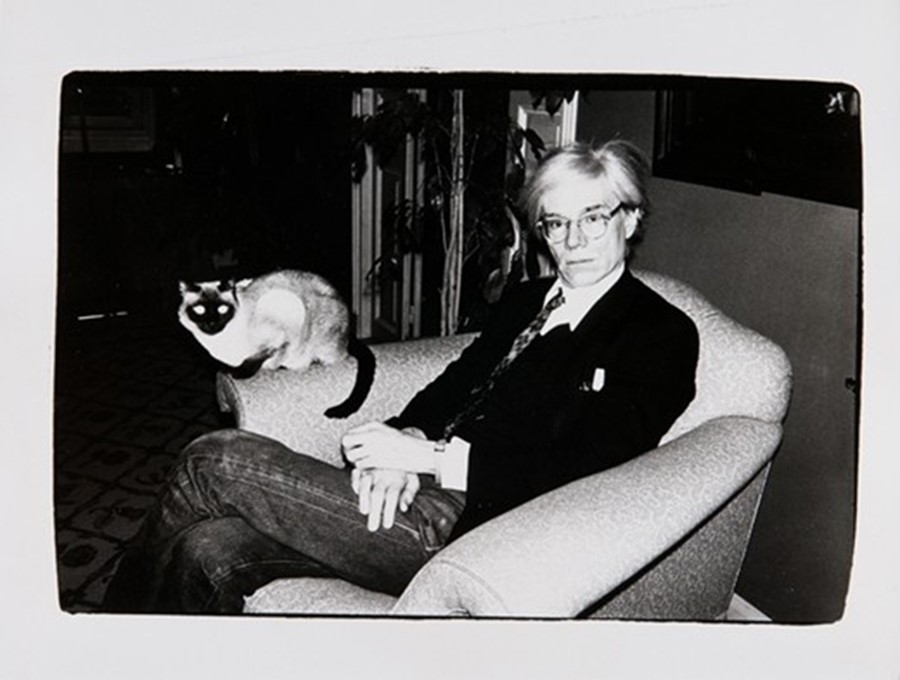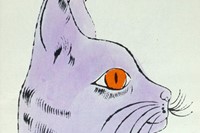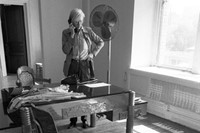We take a look at some of the cats and dogs in Andy Warhol's life and art
Andy Warhol – who would have celebrated his 85th birthday today – is renowned for his countless interests, obsessions and muses and, for the lauded king of pop art, animals were no exception: especially cats and dogs.
Warhol’s love of cats began at an early age and was fuelled by his mother Julia’s own appreciation for the species. Indeed, during the pair’s residency at Warhol’s Carnegie Hill townhouse throughout the 1950s and 60s, they surrounded themselves with cats, all of which were named Sam except for one called Hester. They had so many that friends remember their giving away kittens on a frequent basis. It was during this period that Warhol self-published his book 25 Cats Name Sam and One Blue Pussy (1954), a series of ink wash cat portraits, as well as a book of Julia’s cat drawings entitled Holy Cats by Andy Warhol’s Mother.
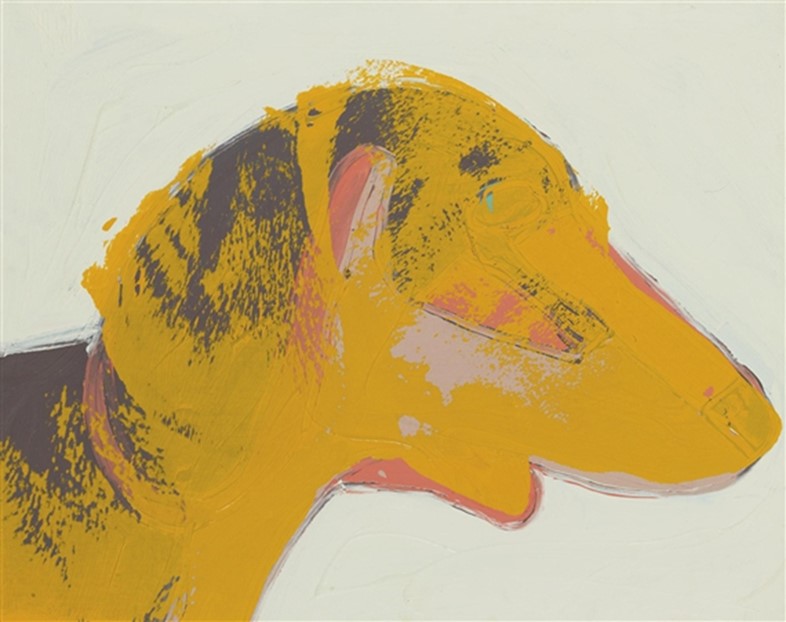
But the start of the 70s marked a new era in Warhol’s pet-keeping habits as, in 1973, his boyfriend Jed Johnson persuaded him to get a dog. This resulted in a dark brown, shorthaired dachshund puppy called Archie with whom Warhol soon became besotted. Filmmaker, producer, and member of Warhol’s inner circle Vincent Fremont recalls, “Andy took Archie to his studio, to art openings, and Ballato’s Restaurant on Houston Street… Archie was always on Andy’s lap, eating bits of food that he was handed [and] was always carefully hidden under Andy’s napkin just case a restaurant health inspector would happen to come by.” Warhol refused to travel to London at this time as it would mean leaving Archie at home or forcing him into six months in quarantine. He even used to take the dachshund to press conferences as his "alter ego" and, in Fremont's words, "would deflect questions to [Archie] that he did not want to answer."
"Archie was always on Andy’s lap...carefully hidden under his napkin just case a restaurant health inspector would happen to come by"
A couple of years later, Warhol and Johnson decided to expand their clan, acquiring another (light brown, shorthaired) dachshund, Amos, to keep Archie company. "Unlike Archie who enjoyed the company of people and was very social, Amos was more like a regular dog," Fremont remembers. At this stage Warhol ceased to take his dogs out on the town, happy in the knowledge that they would entertain each other at home.
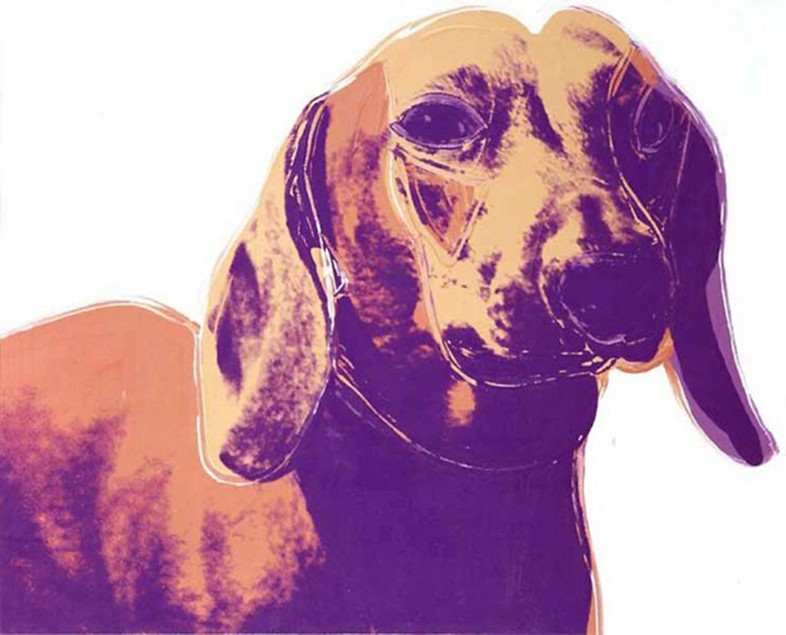
In 1976 – while painting a portrait of art collector and newspaper mogul Peter Brant's cocker spaniel, Ginger – Brant and Warhol's manager Fred Hughes had the idea that Warhol should exhibit an entire series of cat and dog paintings and drawings. Warhol liked the idea "because it could open a new area for commission portraits" and set about the task. At first he painted a number of stuffed animals – their being easier to paint from life – including his other dog, a stuffed Great Dane called Cecil which used to stand "near the bulletproof door at 860 Broadway [and make] messengers jump". He then moved onto living subjects and, of course, Archie and Amos featured in the mix – characterful and typically psychedelically-coloured in their painted form.
The pervading sense of expression conveyed throughout Warhol's cat and dog portraits – each as individual as if they were humans – stands as testimony to Warhol's great love of his favoured animals. In the legendary eccentric's final years, he lived alone in a five-storey building, surrounded by antiques, art, boxes of wigs, copious numbers of cookie jars, in the company of his two treasured miniature sausage dogs.
Suggested viewing/reading: To view a live stream from Warhol's grave click here. To read about Picasso and his dachshund Lump click here.
